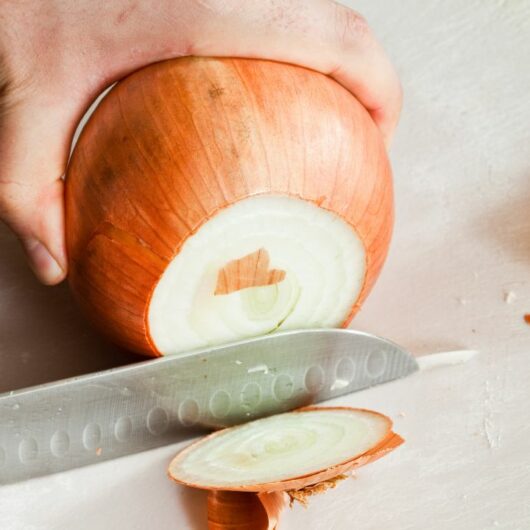Spanish onions, despite how often overlooked they are, are a key ingredient in many classic European and Latin American dishes.
Their balance of classic onion flavors and textures with their own help them stand out as a cultivar amongst a sea of other varieties grown around the world.
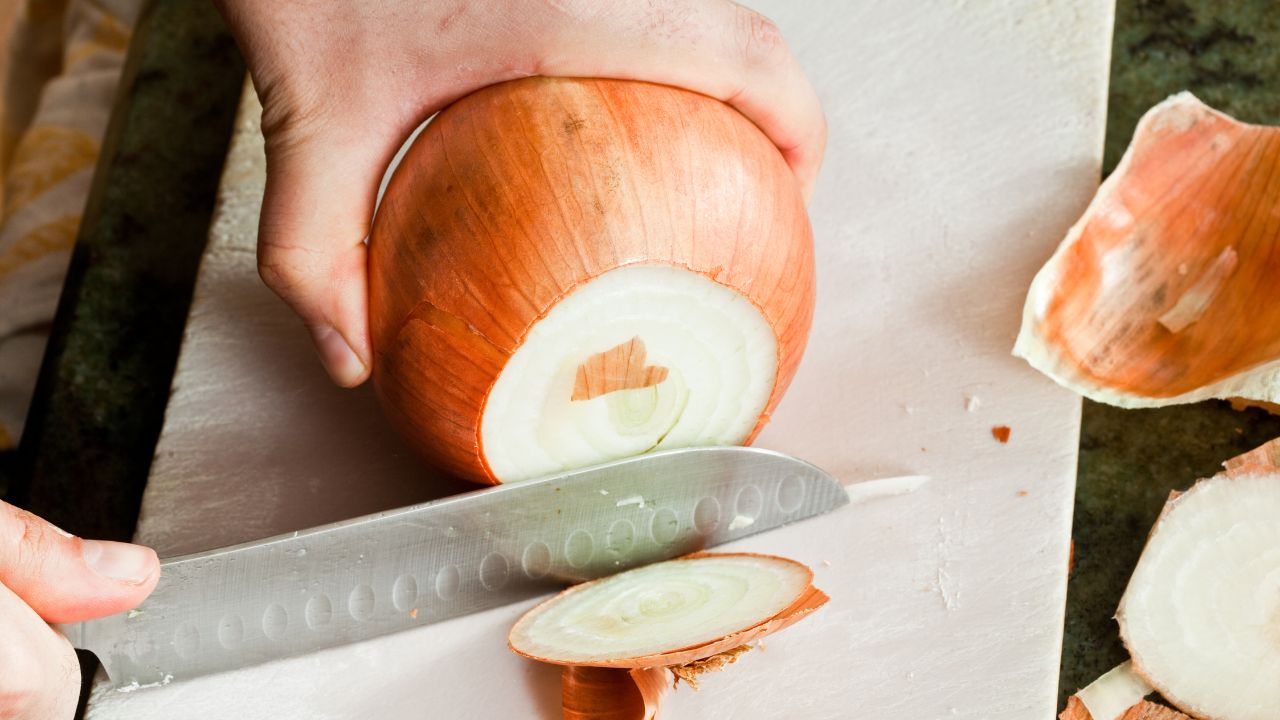
However, this is a double-edged sword when it comes to cooking.
While this can lead to several different takes on classic recipes, it can also mean that replacing it when your pantry runs dry of Spanish onions can be a difficult task.
Difficult, but not impossible.
In this guide, we are going to show you a few onions and other vegetables that you can use in place of Spanish onions.
We’ll also go into a little more detail on the Spanish onion itself, and what qualities it has that make it so great to use in so many dishes (and why it is a tricky ingredient to replace)!
What Are Spanish Onions?
So, before we get any further, let’s first break down some facts about this particular cultivar of this classic onion.
While the onion itself is a vegetable that has been grown across Europe, Asia, and Africa for literally thousands of years, we do not see records of Spanish-specific onions being grown until around the late 15th century, when Spain starts to become a world power in of itself.
Since this period, a variety of Spanish varieties of classic and New World vegetables have been grown and cultivated in Spain, and one of the most popular is the subject of this particular article, the Spanish onion.
Spanish onions can usually be identified by their large, bulbous size, as well as their slightly yellow to white coloration under their tan outer layer.
Spanish onions also tend to be grown in soil where the water content is relatively high, which can have a noticeable effect on what this vegetable tastes like when it is eaten.
Qualities Of Spanish Onions
So, what exactly is it about Spanish onions that makes the theme a popular cultivar of onions to grow across the world?
Size
As we have already mentioned, one of the things that Spanish onions are noted for is their generally large size.
Given that many Spanish and Latin American dishes are meant to be shared, this is a pretty helpful factor when creating dishes that have plenty of servings!
Flavor
Where Spanish onions stand out the most from other cultivars is in their flavor.
Like many other onions, Spanish onions are crunchy when raw, and have a hint of spiciness to them when eaten.
However, that classic onion heat is somewhat less noticeable than in other onion varieties, as Spanish onions are considered a milder type.
Not only that but Spanish onions are also known to be quite a lot sweeter to taste when bitten into.
Most Spanish onions lose a lot of their distinct flavor when they are cooked, however, meaning that these do not tend to be used in cooking recipes unless they are added early to allow their flavors to diffuse better.
However, raw Spanish onions are a favorite ingredient in many fresh recipes, including many taco and tortillas, salad, and relish recipes.
Substitutes For Spanish Onions
So, if you’re looking for a substitute for this particular onion, there are a few qualities that you’re going to need to consider.
- The substitute needs to be somewhat sweet, with a little heat being ideal.
- The alternative also needs to be able to be used in fresh and otherwise uncooked recipes, to retain most of its flavor.
- Ideally, a substitute will also be a decently large food item, although this can be supplemented by using more of the ingredient.
- And, of course, the substitute needs to be relatively easy to source near you.
So, with that out of the way, let’s take a look at some of the options that are available to you that can be used as Spanish onion substitutes.
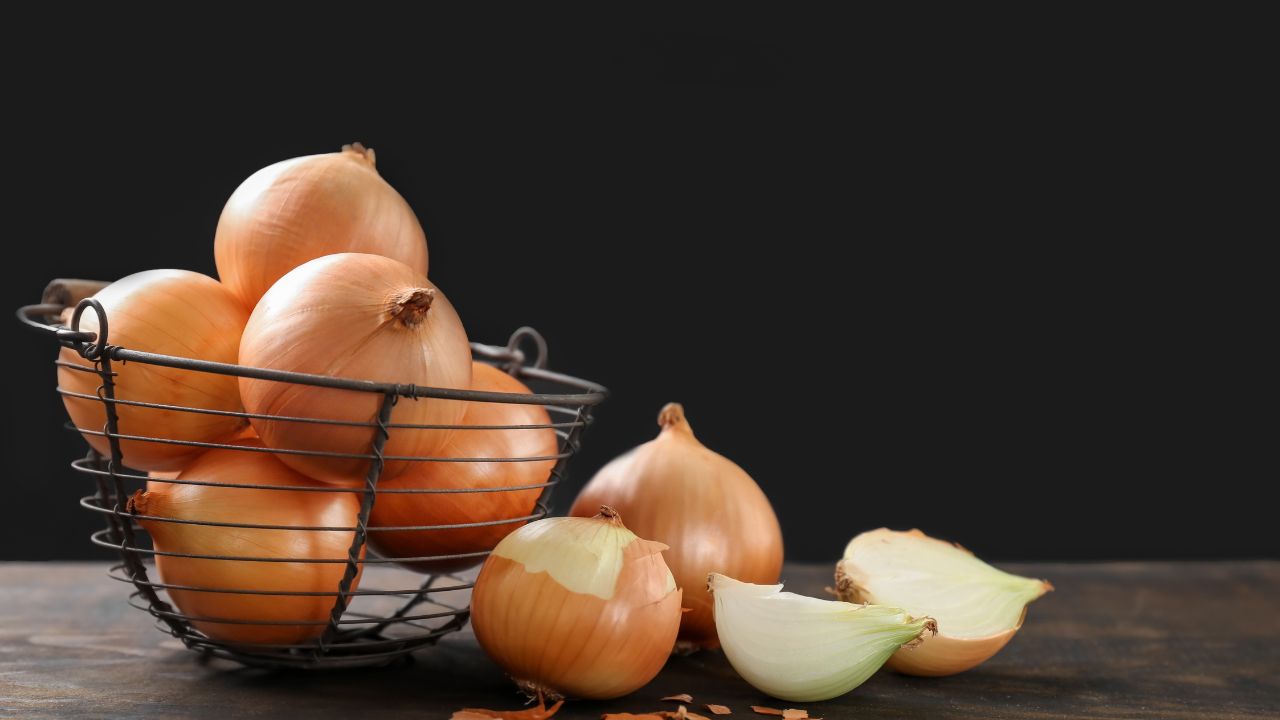
1. Yellow Onions
When it comes to a substitute for Spanish onions, yellow onions are likely going to be one of your first and most readily available options.
This makes sense, considering that Spanish onions are technically a type of yellow onion in themselves. In fact, in many parts of the world where Spanish onions are sold, they are labeled as ‘yellow onions’.
So, who knows? Maybe that yellow onion in the vegetable section in front of you is a Spanish cultivar!
Joking aside, there are many similarities between these two cultivars.
They both have brown or tanned outer layers that give way to white or very light yellow color in the many layers hidden underneath.
The main difference that you’ll find between these two variants is their flavor. Whereas Spanish onions tend to have a muted or sweeter flavor, yellow onions are noticeably more robust.
Their flavor tends to be much stronger, including the somewhat bitter or spicy flavor that many onions have. This is due to this variety being grown in soil with much lower water content.
This also makes the texture of yellow onions slightly chewier, meaning that they will keep their shape and texture much better when it is cooked.
This type of onion is much more popular in cooked dishes like soups and stews, rather than in the raw recipes that Spanish onions are better for.
So, if you have access to other types of onions, it is probably a safe bet to choose them first for a Spanish onion dish.
However, if you have no alternatives, yellow onions will serve you decently well.
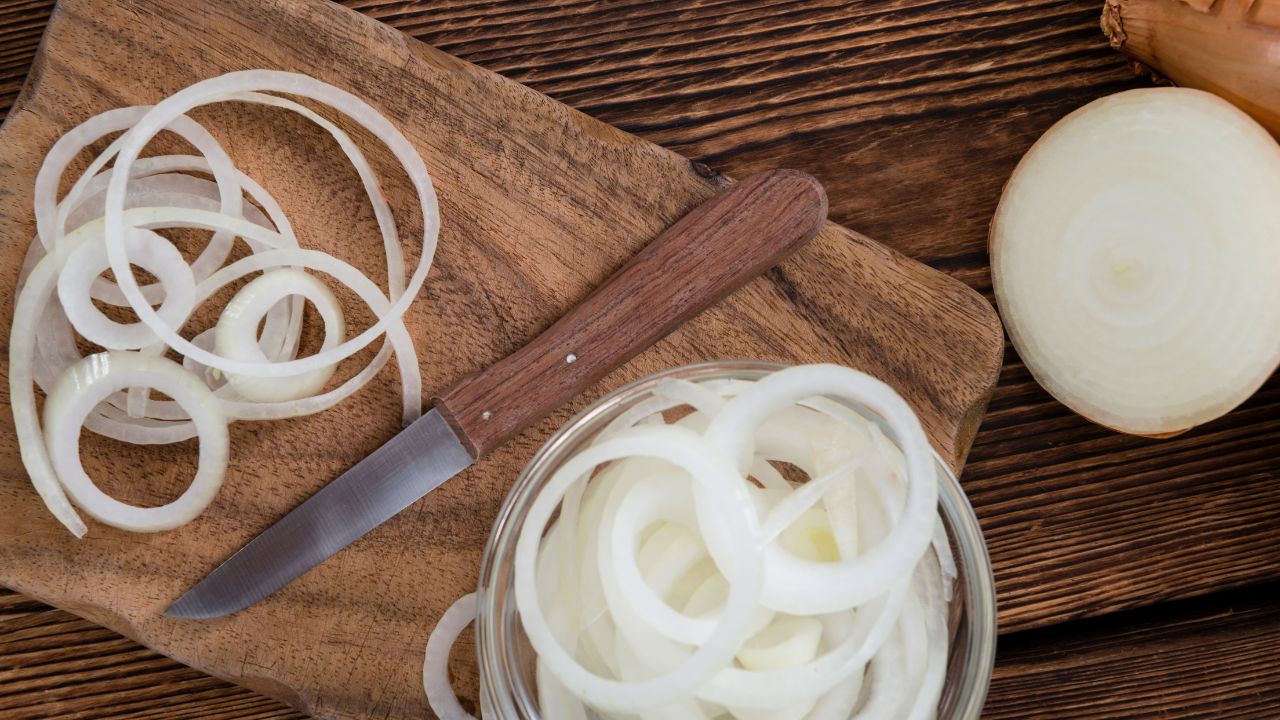
2. White Onions
Right behind yellow onions in terms of how readily available they are, we have the white onion.
Well, we say ‘the’ white onion, but that is slightly incorrect.
There are several different varieties of white onions, with two of the most common in the US being the American white onion and the European white onion
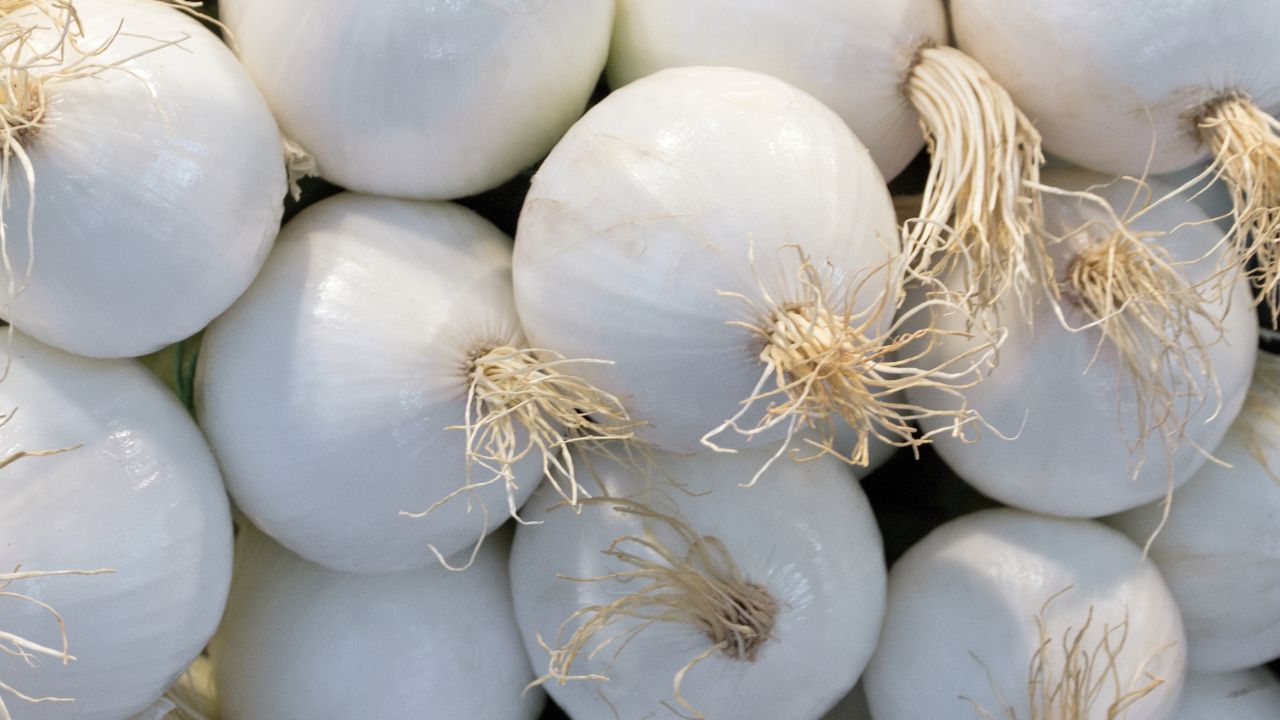
American White Onion
American white onions are exactly what they sound like, a cultivar of white onion mainly grown in North America.
These onions tend to have quite a sharp flavor to them, more similar to yellow onions than Spanish onions/
However, this sharpness isn’t quite as pronounced, and they are a welcome addition to many classic raw onion recipes, such as salsas, guacamole, and even chutneys.
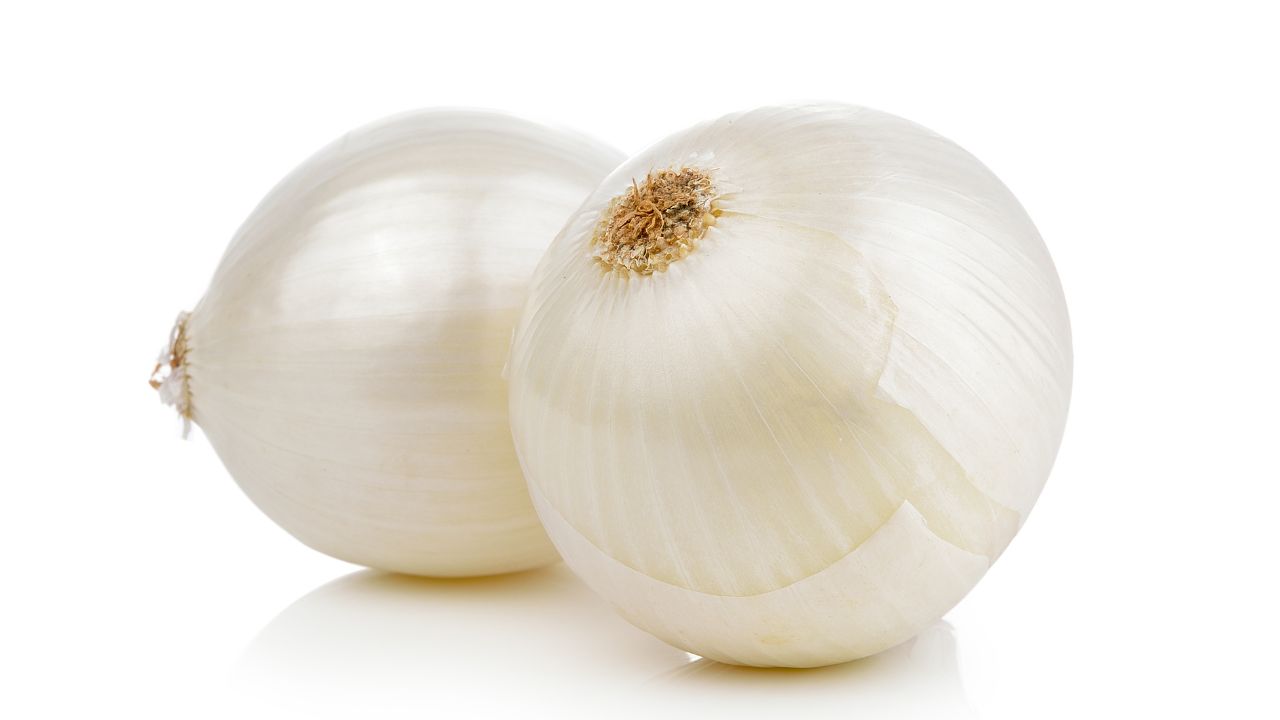
European White Onion
The European variety, usually grown and eaten in the continent that it is named after, tends to have a noticeably more muted flavor to it than the American equivalent.
This flavor is also somewhat lost when it is cooked or steeped in boiling water too, so it shares many qualities with Spanish onions.
This is a great onion to use in fresh recipes as well, such as tortillas and tacos.
Not only that but because these white onions are part of the same family of plants that garlic and chives are, they can even be used
Whichever variety of white onions you choose, you’ll be in safe hands when replacing your Spanish onions with these varieties.
However, it is worth noting that white onions tend to be a little smaller than Spanish onions, so you may need to use more to compensate in a recipe.
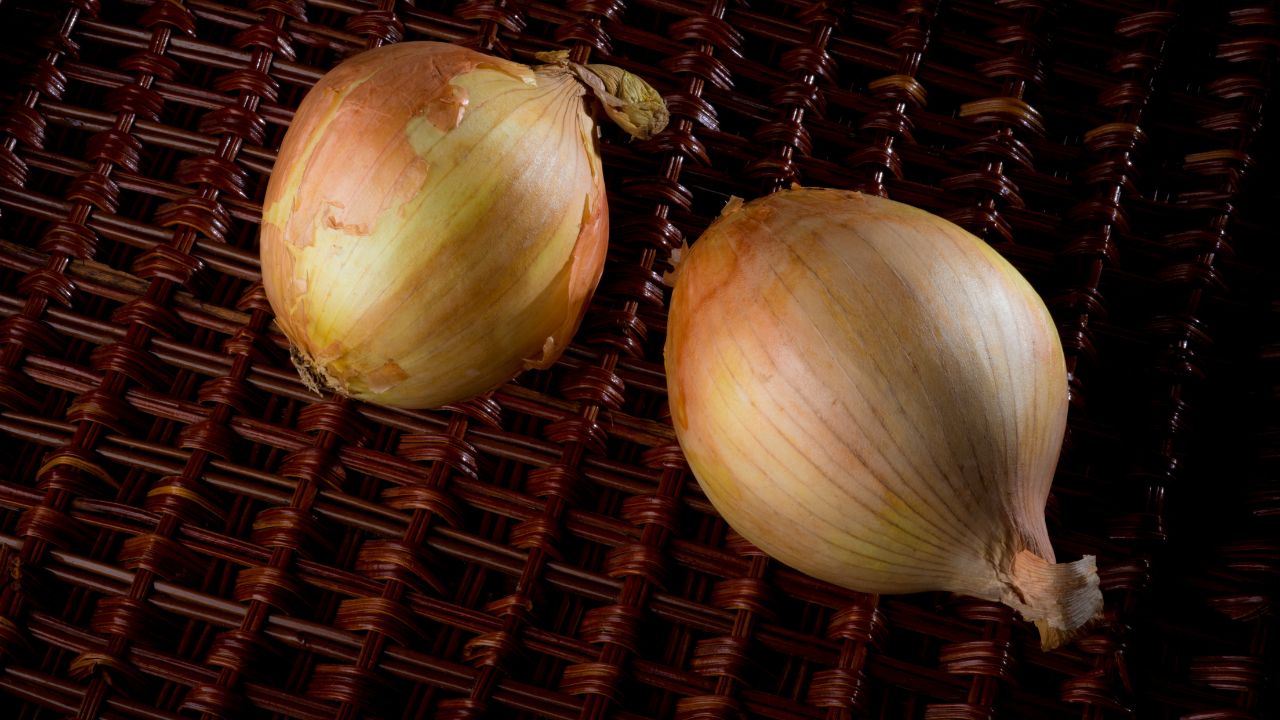
3. Sweet Onions
If you’re looking for an onion that is perfect for a fresh recipe, then you’ll want to go with sweet onions.
As their name suggests, sweet onions are characterized by their noticeably stronger sweet flavor when bitten into.
This quality often means that they aren’t ideal for many savory dishes, but that does mean they are ideal for a fresh, tasty salad.
These onions can be added to pretty much any recipe that you would typically use Spanish onions in, from chutneys to dips, to extra ingredients in a wrap.
There are a few different cultivars of sweeter onions to be found out there.
However, they tend to be labeled under the umbrella of ‘sweet’, so unless you are at a greengrocer with knowledge of their specific varieties, many of these can be used interchangeably.
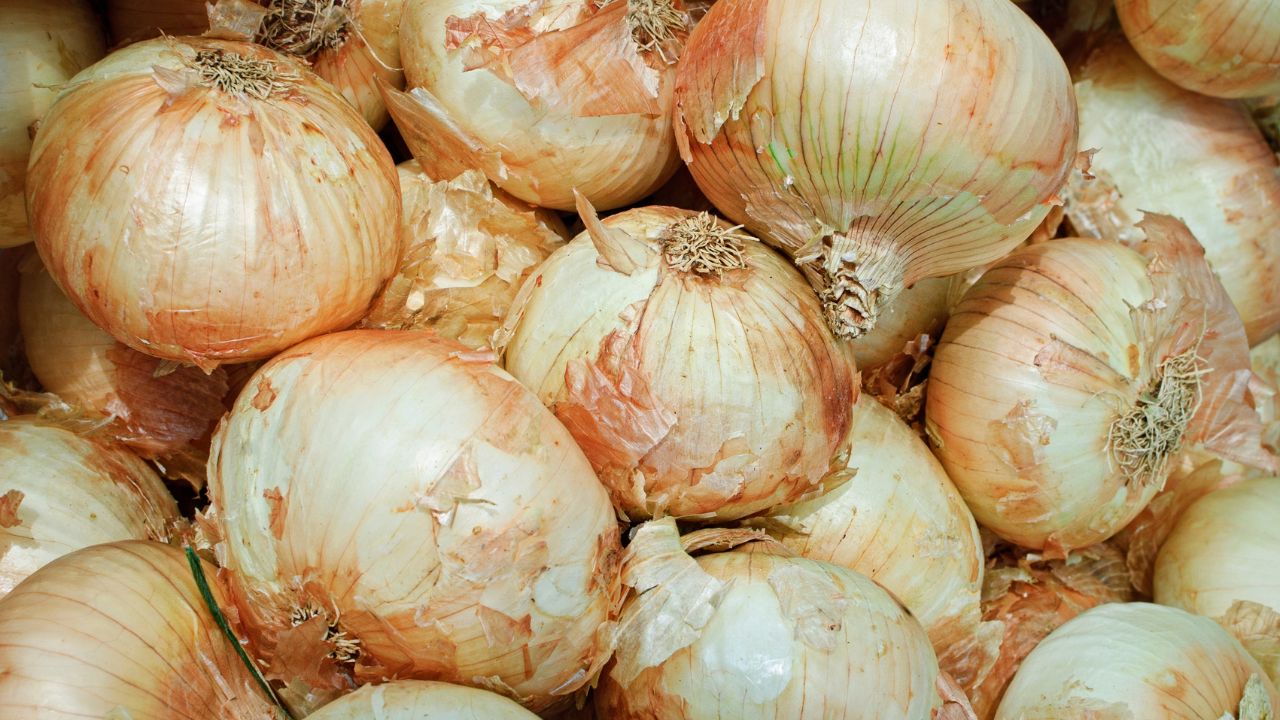
4. Vidalia Onions
Technically, Vidalia onions fall under the wider umbrella of ‘sweet onions’. However, we just love this particular cultivar so much, that we had to give this onion its shout-out.
Like many other sweet onions, this variety has a slightly muted taste when it comes to the sharp flavor that you would normally characterize onions for, alongside its more noticeable sweet flavor.
This makes it an ideal ingredient to use instead of Spanish onions for those fresh salads that you love so much.
However, you won’t find that these onions add much to a cooked or stewed recipe.
Still, if you’re looking for a Spanish onion substitute, you probably are more interested in the texture and fresh flavor of your onions, rather than their flavor potential when it comes to cooking them.
This variety is an easy recommendation from us!
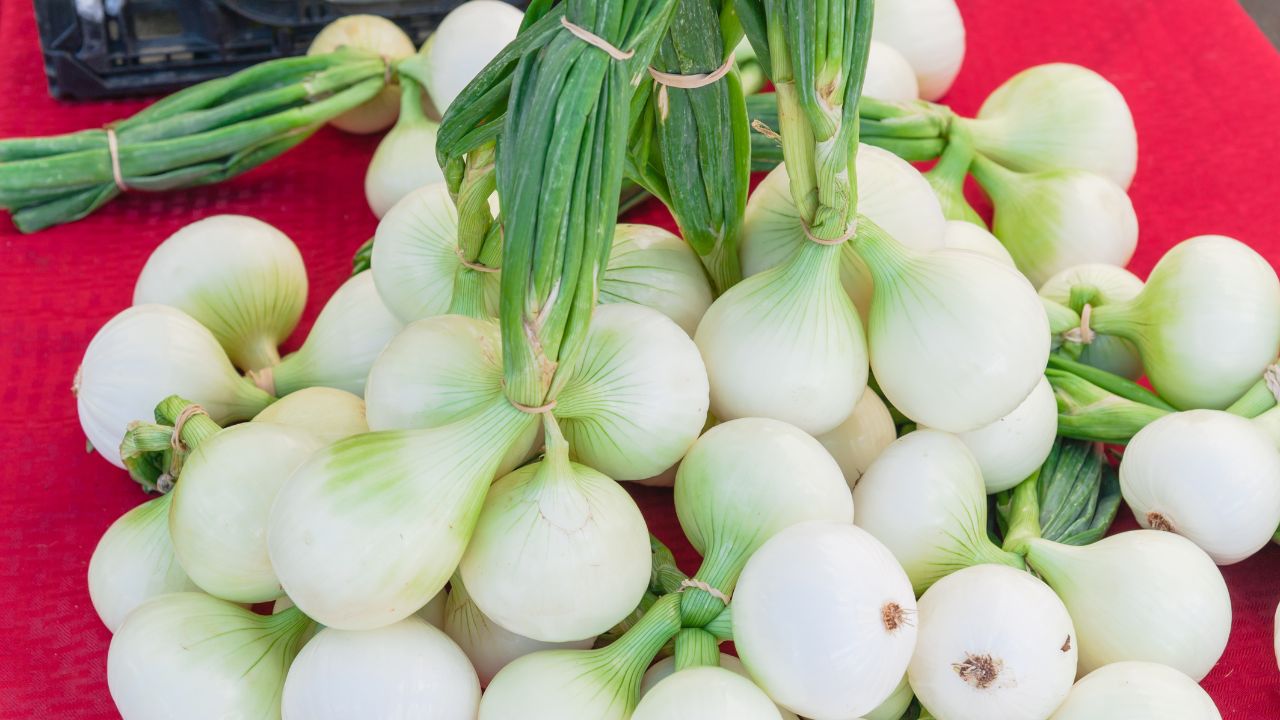
5. Walla Walla Onions
Finally, we have the last onion that we think will be a good substitute for Spanish onions, the Wala Wala onion!
However, last on this list is the only place that it ranks that low, as in every other respect, this is the perfect alternative to Spanish onions!
These onions have the sweetness and texture that you will be looking for in a substitute, so through these in your salads to your heart (and bellies) content!
Interestingly, these sweet onions even keep their flavor when cooked, so they work for stews and soups too!
Final Thoughts
So, as you can see, there are plenty of sweeter onion options out there for when you need to find a replacement for Spanish onions.
As we said at the beginning, replacing a Spanish onion is tough, but not impossible!
- 15 Traditional Greek Breads - July 31, 2023
- 30 Delicious And Gluten-Free Cookie Recipes - July 29, 2023
- 30 Of The Best European Desserts - July 29, 2023

